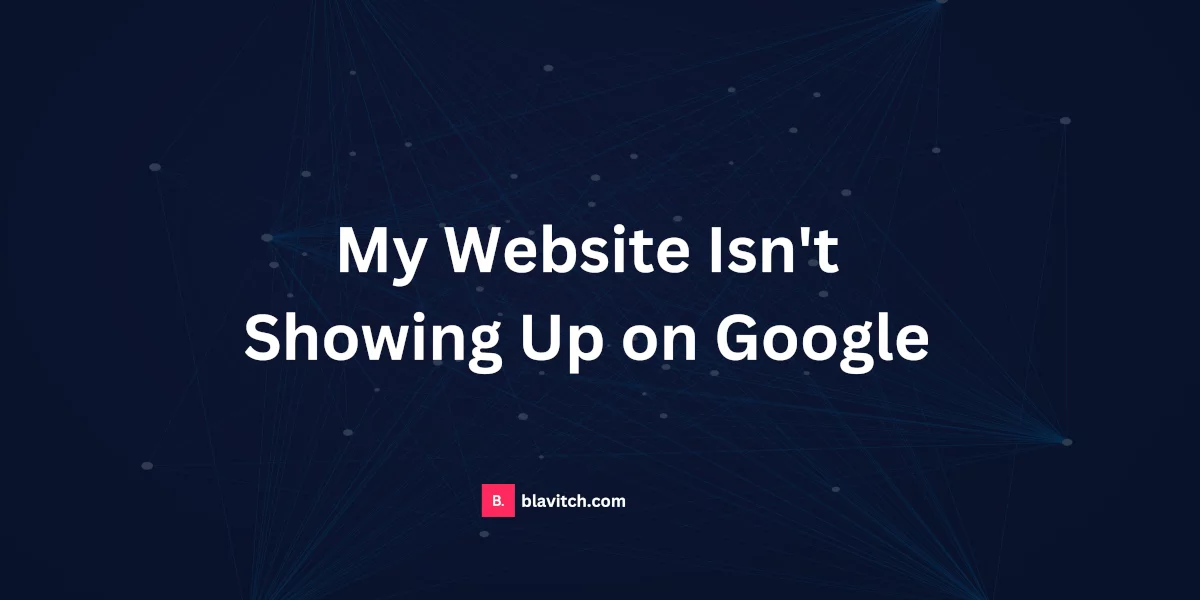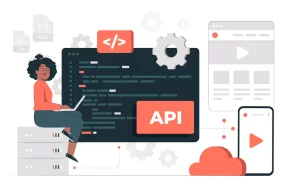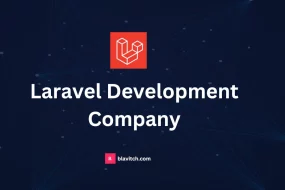
Have you ever wondered why your website isn’t showing up on Google? It can be incredibly frustrating, especially when you’ve put so much effort into creating your online presence. Well, fear not! In this blog, we’ll dive deep into the nitty-gritty of search engine visibility and explore the possible reasons behind your website’s absence from Google’s search results. So, let’s roll up our sleeves and get ready to tackle this issue head-on!
Understanding the Basics of Search Engine Indexing
When it comes to getting your website to show up on Google, understanding how search engines work is crucial. It all starts with a process called “crawling and indexing.” Imagine search engines like Google as busy little bots that continuously scour the web, looking for new and updated content. These bots are known as “crawlers,” and their mission is to visit web pages and follow links to discover and collect information.
Once the crawlers find your website, they “index” it, which means they save the information they gathered in a massive database. This index is like a huge library that search engines use to quickly retrieve relevant results when users enter a search query.
However, there are times when your website might not get indexed properly, leading to its absence from search results. Understanding the common reasons for non-indexing can help you diagnose the problem and take the necessary actions to get your site back on track.
One reason for non-indexing could be due to technical issues. Search engine crawlers rely on specific instructions to navigate and understand your website. If you have a “robots.txt” file that blocks certain pages or directories, it might unintentionally prevent search engines from indexing your important content.
Another crucial aspect is having an XML sitemap. This sitemap acts as a roadmap for search engine crawlers, guiding them to all the essential pages on your website. Without a well-structured and up-to-date XML sitemap, some of your web pages may remain undiscovered by the crawlers.
Canonicalization errors are yet another hurdle to successful indexing. When your website has different URLs pointing to the same content, search engines might see these as duplicate pages, which can lead to confusion and non-indexing.
Moreover, website speed and performance play a significant role in search engine indexing. If your site takes forever to load, crawlers might give up on indexing all your pages, impacting your search visibility.
By understanding these basic concepts of search engine indexing and recognizing potential issues, you can take proactive steps to ensure your website is easily discoverable by search engines like Google. The better your website is indexed, the higher the chances of it showing up in relevant search results and reaching your target audience. So, let’s dive deeper into diagnosing and resolving these issues to boost your website’s search engine visibility!
Diagnosing the Problem
- Verify Website Indexation Status:
The first thing you’ll want to do is check if your website is indexed by Google. Simply type “site:yourwebsite.com” in the Google search bar (without quotes), and it will show you the pages from your site that are currently in the search engine’s index. If no results appear or only a few pages show up, it’s a clear sign that your site might not be fully indexed. - Utilize Google Search Console:
Google Search Console is a powerful tool that provides valuable insights into your website’s performance on Google. If you haven’t already, create an account and add your website to it. The console will alert you to any crawling or indexing issues that Google encounters while accessing your site. - Identify Potential Technical Issues:
Several technical factors can prevent your site from being indexed properly. Some common culprits include a misconfigured robots.txt file, which can block search engine crawlers from accessing certain pages. Make sure to review your robots.txt file and ensure it’s not unintentionally restricting access to essential pages. - Check XML Sitemap Configuration:
XML sitemaps help search engines understand the structure of your website and prioritize the crawling of important pages. Ensure your XML sitemap is up-to-date and submitted to Google Search Console for indexing. - Look Out for Canonicalization Errors:
Canonical tags help resolve duplicate content issues, which can harm your search rankings. Double-check that canonical tags are appropriately implemented to prevent Google from viewing identical content as separate pages. - Evaluate Website Speed and Performance:
A slow-loading website can lead to poor user experience and negatively impact your search rankings. Use tools like Google PageSpeed Insights to analyze your site’s performance and identify areas for improvement.
Taking the time to diagnose the problem is crucial to understanding why your website isn’t showing up on Google. By carefully examining these technical aspects and making the necessary adjustments, you’ll be well on your way to improving your search engine visibility and reaching a wider audience.
Technical Factors Affecting Indexing
When it comes to getting your website noticed on Google, technical factors play a crucial role in ensuring proper indexing and visibility. These factors can sometimes be a bit technical, but understanding and addressing them can make a significant difference in how search engines perceive and rank your website.
- Robots.txt File and Its Impact:
The robots.txt file acts as a set of instructions for search engine crawlers, telling them which pages they can or cannot access on your site. If this file is misconfigured, it might unintentionally block essential pages from being indexed. Double-check your robots.txt file to ensure it allows search engines to crawl and index your important content. - XML Sitemap Configuration:
An XML sitemap is like a roadmap for search engines, guiding them to all the essential pages on your website. If your XML sitemap is incomplete or contains errors, search engines might miss out on indexing some of your crucial content. Make sure your sitemap is up-to-date, error-free, and submitted to Google Search Console for better indexing. - Canonicalization Errors:
Canonicalization refers to resolving duplicate content issues on your website. When multiple URLs lead to the same content, it can confuse search engines, resulting in lower rankings. Use canonical tags to indicate the preferred version of a page, consolidating link equity and avoiding content duplication problems. - Website Speed and Performance:
Site speed is a critical factor in user experience and search engine rankings. Slow-loading websites frustrate users and discourage them from staying on your site. Moreover, search engines tend to prioritize fast-loading sites. Optimize your website’s performance by compressing images, leveraging browser caching, and using content delivery networks (CDNs) to enhance your site’s speed.
Remember, search engines like Google strive to deliver the best possible experience to their users. By addressing these technical factors and ensuring your website is well-optimized, you increase the likelihood of search engines properly indexing your content and ranking it higher in search results. Taking care of the technical aspects sets a strong foundation for the success of your website in the competitive online landscape.
On-Page Optimization for Search Engines
When it comes to getting your website noticed by Google, on-page optimization plays a crucial role. This means you need to focus on the content and structure of your web pages to make them search engine-friendly. Let’s dive into the key aspects of on-page optimization that will help improve your website’s visibility:
- Crafting Relevant and High-Quality Content:
The foundation of a successful website lies in its content. Create well-written, informative, and relevant content that caters to your target audience. Understand their needs and concerns, and address them effectively through your articles, blog posts, and product descriptions. Google rewards websites that provide valuable content to users. - Keyword Research and Implementation:
Conduct thorough keyword research to identify the terms and phrases your potential visitors are using to search for your products or services. Integrate these keywords naturally into your content, titles, meta descriptions, and headers. Avoid keyword stuffing, as it can harm your rankings. - Optimizing Title Tags, Meta Descriptions, and Headers:
The title tag and meta description are the first things users see in search results, so make them compelling and engaging. Keep them relevant to the content on the page, and include your primary keyword for better visibility. Headers (H1, H2, H3, etc.) help organize your content and make it easier for search engines to understand its structure. - Image Optimization and Alt Tags:
Visual content is essential for user engagement, but search engines can’t “see” images as humans do. Therefore, it’s crucial to optimize your images with descriptive file names and alt tags. Alt tags provide a text description of the image, allowing search engines to understand what it represents.
By implementing these on-page optimization strategies, you’re not only improving your chances of ranking higher on Google but also enhancing the overall user experience. Remember, a user-friendly website with valuable content is more likely to attract and retain visitors, which can lead to increased traffic and better search engine visibility.
Off-Page Factors and Backlink Analysis
When it comes to getting your website to show up on Google, it’s not just about what’s on your site but also what’s happening off-page. That’s where off-page factors and backlink analysis come into play. Let’s dive into this crucial aspect of SEO to understand its impact on your search rankings.
One of the key factors that search engines like Google consider is the number and quality of backlinks pointing to your website. Backlinks are links from other websites that lead to yours. They act like votes of confidence, telling search engines that your content is valuable and trustworthy.
Now, not all backlinks are created equal. Search engines pay attention to the authority and relevance of the websites that link to you. High-quality, authoritative sites linking to yours can significantly boost your search rankings. On the other hand, low-quality or spammy backlinks can harm your website’s credibility and visibility.
To improve your off-page SEO, start with backlink analysis. Look into the existing links to your site and assess their quality. Tools like Moz, Ahrefs, or SEMrush can help you with this task. Pay attention to any questionable or toxic links and take necessary actions to disavow or remove them.
When it comes to building new backlinks, focus on quality over quantity. Seek opportunities to get links from reputable and relevant websites within your industry. This can be achieved through guest posting, content partnerships, or outreach to influencers and bloggers.
Remember that natural and organic link-building is essential. Avoid engaging in link schemes or buying links, as these practices can lead to penalties from search engines.
In addition to backlinks, social media presence plays a role in off-page SEO. Social signals, such as shares, likes, and comments, can indirectly influence your search rankings. A strong social media strategy can lead to increased visibility, which may attract more organic backlinks and traffic.
To sum it up, off-page SEO factors like backlinks and social signals are crucial for improving your website’s search engine visibility. Invest time in conducting a thorough backlink analysis, and focus on building high-quality links and fostering a strong social media presence. By doing so, you’ll boost your chances of climbing up the Google search results and gaining more organic traffic to your website.
Mobile Responsiveness and User Experience
In today’s digital landscape, having a mobile-friendly website is no longer just an option, it’s a must! Google, being ever-conscious of user experience, places a significant emphasis on mobile responsiveness when ranking websites in search results. So, if your website isn’t showing up on Google, one possible reason could be its lack of mobile-friendliness.
Think about it: how often do you find yourself browsing the internet on your smartphone or tablet? Chances are, it’s quite often. And you’re not alone! The majority of internet users access websites on their mobile devices, which is why search engines prioritize mobile-friendly sites to provide the best user experience.
To check if your website meets Google’s mobile-friendly standards, you can use their nifty mobile-friendly test tool. Simply enter your website’s URL, and it’ll assess how well your site adapts to different screen sizes and devices. If your website passes the test, great job! You’re on the right track. But if it doesn’t, don’t worry; there are steps you can take to improve it.
Start by considering a responsive design. A responsive website automatically adjusts its layout and content based on the screen size it’s viewed on. This ensures that your website looks great and is easy to navigate whether it’s on a desktop, tablet, or smartphone. Users won’t need to pinch and zoom to read your content, which can be frustrating and lead to higher bounce rates.
Take a close look at your website’s navigation. Is it intuitive and easy to use on mobile devices? Cluttered menus and tiny buttons can make navigation a nightmare for mobile users. Simplify your menus and make sure all clickable elements are comfortably tappable, even on smaller screens.
Another critical aspect to consider is page loading speed. Mobile users are often on the go and expect instant access to information. If your website takes forever to load on mobile devices, users are likely to abandon it and look for faster alternatives. You can use tools like Google’s PageSpeed Insights to identify and address speed-related issues.
Remember, providing a seamless mobile experience not only improves your chances of appearing in Google search results but also enhances user satisfaction and encourages them to spend more time on your website.
By prioritizing mobile responsiveness and user experience, you’ll be taking a significant step towards boosting your website’s visibility and ultimately reaching a broader audience. So, don’t miss out on the mobile revolution—make your website mobile-friendly today!
Local SEO Considerations
When it comes to getting your website to show up on Google, local SEO is an essential factor to consider. Local search results have become increasingly important, especially for businesses targeting a specific geographic area. Here are some crucial points to keep in mind for boosting your local search visibility:
- Importance of Local Search Results:
Local SEO is all about ensuring your website appears in the search results for location-based queries. This is particularly vital for businesses with physical stores or services targeting a specific region. When someone looks for “restaurants near me” or “plumbers in [your city],” Google aims to provide the most relevant and nearby results. - Optimizing for Local Searches:
To improve your local SEO, make sure your website contains accurate and up-to-date information about your business location, phone number, and opening hours. This data should be consistent across your website, Google My Business (GMB) listing, and other online directories. - Google My Business and Its Impact:
Setting up and optimizing your Google My Business listing is crucial for local SEO success. GMB is a free tool that allows you to manage how your business appears on Google Maps and Search. When someone searches for your business or related keywords, the GMB listing provides essential details like your address, phone number, and reviews. - Online Reviews and Reputation:
Positive reviews on your GMB and other review platforms can significantly influence local search rankings. Encourage satisfied customers to leave reviews, respond to reviews professionally (both positive and negative), and strive to maintain a positive online reputation.
By focusing on local SEO, you increase your chances of appearing in location-based searches, making it easier for potential customers in your area to find and engage with your business. Keep your information accurate and up-to-date, optimize your Google My Business profile, and foster a positive online reputation to boost your local search visibility effectively.
Dealing with Duplicate Content
Having duplicate content on your website can seriously hinder your chances of showing up on Google. Search engines strive to deliver the most relevant and unique content to their users, and duplicate content can confuse them, resulting in lower search rankings or even penalties. Let’s explore how to identify and address these issues to improve your website’s visibility.
- Identifying and Addressing Duplicate Content Issues
To begin, conduct a thorough content audit to identify any instances of duplicate content on your site. This can occur unintentionally, especially on larger websites with multiple authors or contributors. Pay special attention to product descriptions, blog posts, and other textual content that might be replicated across different pages.
- Canonicalization and Best Practices
Canonicalization is a technique that helps search engines understand which version of a page should be considered the primary one. By using canonical tags, you can indicate the preferred URL for a specific piece of content, consolidating the ranking signals and avoiding duplicate content problems.
- Content Syndication and Cross-Posting
If you syndicate content on multiple platforms or repost articles, it’s essential to use canonical tags or link back to the original source. This practice ensures that search engines give credit to the original content and prevent potential issues related to duplicate content.
- Internal Linking and Structured Data
Proper internal linking and structured data can also play a crucial role in addressing duplicate content concerns. Make sure to create a consistent and logical linking structure that guides search engines to the most relevant version of your content.
- Regularly Monitor and Update
Duplicate content issues might emerge over time due to various reasons, such as site updates or unintentional mistakes. Therefore, it’s crucial to regularly monitor your website for any new instances of duplicate content and resolve them promptly.
On-Page Optimization for Search Engines
When it comes to getting your website to show up on Google, one of the crucial factors you need to focus on is on-page optimization. This means making sure your web pages are set up in a way that search engines can easily understand and rank them appropriately.
First and foremost, you need to create relevant and high-quality content. Google loves websites that provide valuable information to users. So, take the time to research and incorporate relevant keywords that people might use to find content like yours.
Next, pay attention to your title tags, meta descriptions, and headers. These elements play a significant role in telling search engines what your page is about. Craft compelling titles and meta descriptions that accurately represent your content and entice users to click on your links in the search results.
Always keep in mind that user experience is paramount. Make sure your website is easy to navigate, loads quickly, and is mobile-friendly. Google takconsiders user experienceen determining search rankings, so a positive user experience can give you a competitive edge.
Lastly, don’t resort to keyword stuffing or other black-hat SEO practices. These tactics may provide short-term gains, but they can get your website penalized by search engines in the long run. Instead, focus on providing valuable content and a user-friendly experience to create a strong foundation for your website’s search engine visibility.
By optimizing your web pages for search engines and users alike, you’ll increase the chances of your website appearing on Google’s search results and reaching a wider audience. Remember, SEO is an ongoing process, so keep monitoring your performance, making improvements, and staying up-to-date with the latest best practices to maintain a competitive edge in search engine rankings.
Utilizing Social Media and Content Marketing
In today’s digital landscape, harnessing the power of social media and content marketing is crucial to boost your website’s visibility on Google and engage with your target audience. These dynamic tools not only create brand awareness but also play a significant role in driving organic traffic to your site. Let’s dive into some effective strategies for leveraging social media and content marketing to enhance your online presence:
- Building a Strong Social Media Presence:
Actively maintain and grow your presence on popular social media platforms such as Facebook, Twitter, Instagram, LinkedIn, and others that align with your target audience. Engage with your followers regularly by sharing valuable content, responding to comments, and participating in discussions. A vibrant and interactive social media presence can foster a loyal community around your brand. - Content Marketing Strategies:
Craft compelling and relevant content that resonates with your audience’s interests and pain points. This can include blog posts, articles, infographics, videos, podcasts, and more. Ensure that your content provides value, educates, or entertains your audience, positioning you as an authoritative figure in your industry. - Encouraging Social Sharing and Engagement:
Make it easy for your website visitors to share your content on their social media platforms. Incorporate social media sharing buttons on your blog posts and web pages to facilitate seamless sharing. Additionally, encourage your audience to engage with your content by asking questions, running polls, and responding to comments promptly. - Leveraging Influencers and Collaborations:
Collaborate with influencers and industry leaders to expand your reach. Influencers often have a dedicated following that trusts their recommendations, which can be invaluable for building brand awareness. Partner with influencers to create co-branded content or host joint events to tap into their audience base. - Running Social Media Campaigns:
Design and execute targeted social media campaigns to promote specific products, services, or events. Use eye-catching visuals, compelling copy, and relevant hashtags to amplify the reach of your campaigns. Monitor the performance of your campaigns and make data-driven adjustments for better results. - Paid Social Media Advertising:
Consider investing in paid social media advertising to complement your organic efforts. Platforms like Facebook Ads and Instagram Ads allow you to target specific demographics, interests, and behaviors to reach your ideal audience. A well-optimized ad campaign can drive traffic and conversions to your website. - Analyzing and Optimizing Social Media Performance:
Regularly monitor the performance of your social media efforts using analytics tools. Analyze metrics such as engagement, reach, click-through rates, and conversions to gauge the effectiveness of your strategies. Based on the data, refine your approach and focus on tactics that yield the best results.
By integrating social media and content marketing into your overall digital strategy, you can create a powerful synergy that drives more traffic to your website, boosts your online presence, and strengthens your brand’s reputation. Stay consistent, adapt to your audience’s preferences, and remain open to experimentation to unlock the full potential of these dynamic tools.
Addressing Potential Penalties
When it comes to managing your website’s visibility on Google, addressing potential penalties is crucial to ensure your online success. Google penalties can be a real setback, causing your website to lose rankings and visibility in search results. However, don’t panic! By taking swift and proactive measures, you can get your site back on track.
- Understanding Google Penalties:
Google takes its search quality seriously, and to maintain a high standard, they enforce various guidelines. If your website violates these guidelines, you might receive a penalty, such as a drop in rankings or even removal from search results. Penalties can be manual or algorithmic, and it’s essential to identify which type you might be facing. - Signs of a Penalty:
Recognizing a penalty is the first step in addressing the issue. Sudden and significant drops in organic traffic, a drastic decline in keyword rankings, or a “manual action” message in Google Search Console are some signs that your website might have been penalized. - Identifying the Cause:
Pinpointing the exact cause of the penalty is vital for effective recovery. Common reasons include thin or duplicate content, spammy backlinks, keyword stuffing, or cloaking (presenting different content to search engines and users). - Fixing the Issues:
Once you’ve identified the cause, roll up your sleeves and start resolving the issues. If you have thin or duplicate content, work on creating high-quality and original content that adds value to your visitors. For spammy backlinks, conduct a thorough backlink audit, and disavow any harmful links. - Requesting Reconsideration:
If your website received a manual penalty, you can submit a reconsideration request to Google after making the necessary fixes. Be transparent in your request, acknowledging the issues, and showcasing your efforts to comply with their guidelines. - Algorithmic Penalties:
Addressing algorithmic penalties can be more challenging as they are automated and not accompanied by specific notifications. Focus on making substantial improvements to your website’s overall quality, relevance, and user experience to regain lost rankings. - Patience and Persistence:
Recovering from penalties can take time, so it’s essential to be patient and persistent throughout the process. Continue implementing best SEO practices and stay up-to-date with Google’s guidelines to prevent future penalties. - Seek Professional Help if Needed:
If you find the penalty recovery process overwhelming or aren’t sure how to proceed, don’t hesitate to seek help from SEO experts. Their experience and knowledge can be invaluable in getting your website back on track and preventing future issues.
Remember, the key to addressing potential penalties is to act promptly, stay informed about best practices, and maintain a commitment to providing valuable content and a positive user experience. By taking these steps, you’ll increase your chances of not only recovering from penalties but also thriving in the competitive online landscape.
Regularly Monitoring and Maintaining SEO Efforts
In the ever-evolving landscape of online visibility, staying on top of your website’s search engine optimization (SEO) is key to maintaining a strong online presence. Regularly monitoring and maintaining your SEO efforts can ensure that your website continues to perform well in search engine rankings and attracts a steady flow of organic traffic. Here’s how you can keep a close eye on your website’s SEO and make necessary adjustments to stay ahead of the game:
- Stay Informed with Analytics: Keep a close eye on your website’s performance using analytics tools like Google Analytics. These tools provide valuable insights into your website’s traffic, user behavior, and the effectiveness of your SEO strategies. By analyzing the data, you can identify trends, spot areas for improvement, and make data-driven decisions.
- Track Keyword Performance: Monitoring how your targeted keywords are performing is crucial. Check their rankings regularly and identify opportunities to optimize further or adjust your targeting based on changing trends or user behavior.
- Monitor Backlink Profile: Pay attention to your website’s backlinks. Regularly check for new backlinks, as well as any potentially toxic or spammy links that could harm your SEO efforts. Use tools to audit and disavow harmful links if necessary.
- Content Updates and Refreshing: Keep your content fresh and up-to-date. Regularly review your existing content and consider updating it with new information or insights. This not only helps with search engine rankings but also keeps your audience engaged.
- Review On-Page Elements: Periodically review your website’s on-page elements, such as title tags, meta descriptions, and headers. Make sure they remain relevant and optimized for your target keywords.
- Mobile Responsiveness Check: With the increasing use of mobile devices, ensure that your website remains mobile-friendly. Regularly test its responsiveness and user experience on various devices.
- Regular Website Audits: Conduct comprehensive website audits at regular intervals. Look for technical issues like broken links, crawl errors, and duplicate content, and resolve them promptly.
- Stay Updated with Algorithm Changes: Search engines often update their algorithms, impacting search rankings. Stay informed about these changes and adjust your strategies accordingly.
- Competitor Analysis: Keep an eye on your competitors and their SEO efforts. Learn from their successes and failures to fine-tune your approach.
- Consistency is Key: Remember that SEO is an ongoing process. Consistency in monitoring and maintaining your efforts is crucial for long-term success.
By regularly monitoring and maintaining your SEO efforts, you can adapt to changes in the online landscape and continue to improve your website’s visibility on search engines. It’s an investment worth making to ensure that your website remains competitive and attracts a steady stream of organic traffic over time.
Seeking Professional Help
If you’ve diligently tried to address the issues preventing your website from showing up on Google but still find yourself struggling to gain visibility, it may be time to consider seeking professional help. Sometimes, despite our best efforts, certain technical or strategic aspects of search engine optimization (SEO) can be quite intricate and require the expertise of an SEO professional. Here’s what you should keep in mind when contemplating this option:
- Recognizing When to Seek Help:
When you’ve exhausted your own SEO knowledge and haven’t seen significant improvements in your website’s rankings, it’s a clear indication that seeking professional assistance might be the right step forward. SEO professionals are well-versed in the latest trends, best practices, and algorithm updates, making them equipped to tackle complex challenges. - Choosing the Right SEO Expert:
With numerous SEO specialists and agencies out there, finding the right fit can be daunting. Research potential candidates thoroughly and seek recommendations from trusted sources. Look for experts with a proven track record of success, positive reviews, and a clear understanding of your industry and niche. - Discuss Your Goals and Concerns:
When you’ve identified a potential SEO professional, communicate your specific goals and the issues you’ve been facing. A good SEO expert will take the time to understand your unique challenges and tailor a strategy that aligns with your objectives. - Transparency and Explanation:
As you consult with an SEO professional, make sure they’re transparent in their approach and willing to explain their strategies clearly. Avoid those who promise overnight miracles or resort to unethical practices, as they might lead to severe penalties from search engines. - Measurable Results and Reporting:
A reputable SEO expert should be able to provide you with measurable goals and a plan for tracking progress. Regular reporting on key performance indicators (KPIs) will help you gauge the effectiveness of their efforts. - Collaboration and Education:
While you’re seeking professional help, don’t shy away from collaborating with the SEO expert. They should be open to sharing their knowledge and educating you about the strategies they’re implementing. Understanding the process will empower you to make informed decisions about your website’s future. - Budget Considerations:
Hiring an SEO professional is an investment, so consider your budgetary constraints when making a decision. Remember that quality SEO services often require a reasonable investment, but it can lead to long-term benefits. - Patience and Realistic Expectations:
SEO is an ongoing process, and substantial improvements may take time. Be patient and maintain realistic expectations throughout the journey.
In conclusion, seeking professional help for your website’s SEO challenges can be a wise decision when you’ve exhausted your own resources. By choosing the right expert, fostering a collaborative environment, and maintaining patience, you increase your chances of improving your website’s search engine visibility and overall online success. Remember, the world of SEO is dynamic, so continuous learning and adaptation will be the keys to staying ahead in the digital landscape.
Conclusion
We’ve covered a lot in this blog, and I hope you found it helpful in understanding why your website might not be showing up on Google. It can be frustrating, I know, but the good news is that there are steps you can take to turn things around and improve your search engine visibility.
Now, before you dive into the action steps, let me tell you about an excellent opportunity that can save you time and energy while achieving the best results. Hiring a professional SEO expert, like the team at Blavitch, could be a game-changer for your online presence.
Why should you consider Blavitch? Well, they’ve got the expertise and experience to tackle all the technicalities that might be holding your website back. From optimizing your site structure to conducting thorough backlink audits, they know the ins and outs of SEO like the back of their hand.
You see, SEO is not just a one-time thing; it requires consistent monitoring and updates to stay ahead in the search rankings. Blavitch can take that burden off your shoulders, allowing you to focus on your core business while they work their magic to boost your website’s visibility.
But don’t just take my word for it. Take a moment to check out their portfolio and see the success stories of other businesses they’ve helped. The results speak for themselves!
So, if you’re serious about taking your website to new heights and want to outrank your competitors, it’s time to take action. Reach out to Blavitch today for a personalized consultation and see how they can tailor their services to suit your unique needs.
Remember, the world of SEO can be complex and ever-changing, but with Blavitch by your side, you’ll have a dedicated team of experts working tirelessly to ensure your website gets the attention it deserves.
Wishing you all the best on your SEO journey!







